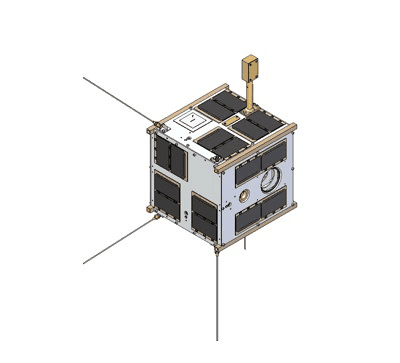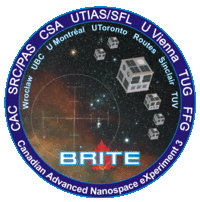The satellite
An essential innovation of the project lies in a precise, miniaturized three-axis stabilisation. Three centrifugal masses driven by directly commutated miniature electric motors stabilise the nanosatellite in space. Sun sensors attached to all surfaces and a magnetometer are used to determine the position. The fine alignment is done with the help of a star tracker, a separate camera for recording a known star constellation. Three electromagnetic coils allow, once per orbit of the satellite, to compensate for the disturbance torques picked up by the reaction wheels.

